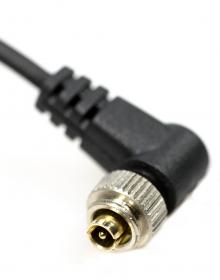Door andre op di, 07/10/2012 - 21:13
The following user guide can also be found at the site of http://www.dynamicperception.com. The nanoMoCo stepper driver/controller is a specialized, Arduino-compatible* device specifically designed to enable advanced multi-axis stepper-based robotics and automation projects less expensive, and easier to create.
Key features of the nanoMoCo include:
Door andre op wo, 07/04/2012 - 22:52
Dynamic Perception has announced their long awaited "nanoMoCo Stepper Driver/Controller" boards today. Dynamic Perception's mission is to provide low-cost and easy-to-use photographic motion-control systems. Our focus is to enable creativity and experimentation through open and unencumbered hardware, firmware, and software. Founded by the creators of the OpenMoCo open-source motion-control system we are striving to provide flexible and expandable kits for solving any motion-control need.
Door andre op do, 06/14/2012 - 16:15
In my last post called "Introduction to time lapse photography" I explained the basics of time lapse photography in combination with a automatically controlled Dynamics Perception dolly. The use of a time lapse slider gives you the possibility to control the motion of your camera in one linear direction. But what about controlling the pan and tilt axis of your camera? Or when you want to rotate your complete subject while you are creating a time lapse sequence?
Door andre op wo, 06/06/2012 - 13:11
Today I received these PCB's in the post. I designed these myself. That was a difficult road since I had never done this before. Electronics is a hobby of mine, but designing and producing my own boards was always something that I tried to prevent. In the end it wasn't that hard. The board is designed with Eagle, a software package that is free to use for small non commercial boards. The boards were produced in China. The only drawback of that is that you have to wait six weeks before you get your results back.
Door andre op wo, 06/06/2012 - 13:08
I gave an elaborate explanation about timelaps exposure ramping in my last blog called Bulb ramping with a Nikon dSLR - The technical story. I am very interested in exposure ramping timelapse photography. These are movies where you for example see a sunset while the exposure of the movie stays more or less the same. My previous blog describes a solution for a problem that Nikon camera's have when you use them for this complex technique. I now have developed a device that can be used to automatically exposure ramp timelapse movies. The ISO of the camera, shutter speed and in the very near future the aperture of the camera will be automatically set by my timelapse controller.
Door andre op wo, 06/06/2012 - 13:06
I hate it when Canon users say that a Nikon is not capable of something. Well there is one thing that Canon camera's do better. Exposure ramping or bulb ramping. Imagine you want to create a time lapse movie of a sunset. Normally you would do that with a fixed shutter speed. But then your movie will become darker and darker when the sun sets. Wouldn't it be great if you can make the shutter speed longer after each frame? Then the day will go into the night and the night will have the same exposure. This is where bulb ramping comes in.
Door andre op wo, 06/06/2012 - 13:00
Elysia Visuals MicroEngine
Ok, I promised some hardware projects that I would publish on my blog. This is certainly photography related, but a bit technical for most of you I guess. The first piece of hardware is my studio time lapse photography engine. More projects will follow, but not all of them will be open source, open hardware like the MicroEngine. The software that I have written for the device is open source under the GPL license.
